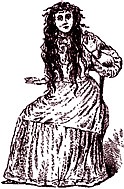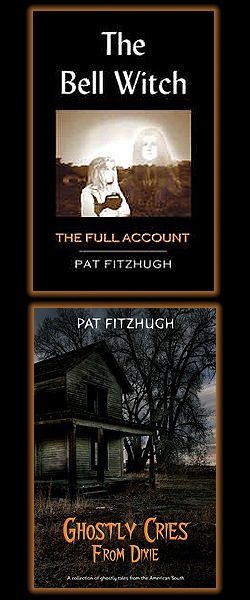The Bell Witch Site
Recommended Books
The Bell Witch SiteOn Social Media The
Bell Witch Site | Copyright © 1995
- 2025 Pat Fitzhugh On Social Media
Pat Fitzhugh's Official Web Site
|
Attractions in Adams, TN
The Bell School Building
The Bell School building is located on land formerly owned by Dr. Charles Bailey Bell, which he inherited upon the passing of his father, Dr. Joel Thomas Bell, in March of 1910. A small portion of the original 207-acre tract was conveyed to the city of Adams in 1912 for the construction of a school. Bell High School opened in 1913, serving northwestern Robertson County until it was destroyed by fire in 1919.
Located on Highway 41, the current structure was completed in 1920 and served as a high school until 1949, when Jo Byrns School was built in nearby Cedar Hill. Bell school then served as a junior high until 1975. As a side note, Mr. Jo Byrns, the politician for whom the new high school was named, was a descendant of Squire James Byrns, mentioned in the M.V. Ingram account of the Bell Witch legend. The building and grounds are now a park that boasts an antique mall, a restaurant, a tea room, and the Adams Museum and Archives. Outside, there is a pavilion, a log cabin, an old barber shop, and a baseball field.

The Adams Antique Mall
Located in the Bell School Building, the Adams Antique Mall boasts two floors of antiques to choose from. A tearoom and a restaurant with great food and prices are located in the same building, along with the Adams Museum and Archives.
The Adams Museum and Archives
Formed by a grant from the City of Adams on July 4, 1996, the Adams Museum and Archives is home to items that are reminiscent of the town's past, and the Bell Witch is only the beginning. From becoming a key town along the Edgefield and Kentucky Railroad, to the Civil War battle west of town and the Tennessee-Kentucky Tobacco Night Riders, the city of Adams is rich in history. You will see Native American artifacts, antique tools, pictures of Adams during its heyday, and even an old casket!
The Adams Museum and Archives is located in the old Bell School building on Highway 41.
The Bell Log Cabin
The last remaining structure from the original John Bell farm is the log cabin that is adjacent to the Bell School Building. Most likely built by John Bell and his sons, the 1810 circa cabin was originally situated on the northwest corner of the Bell farm near the Red River. It was moved to the Bell School grounds in 1982, and was dedicated to the Tennessee-Kentucky Threshermen's Association.
Joel Egbert Bell, son of John Bell, moved into the cabin most likely around 1833, staying until 1855 when he moved to nearby Springfield, Tennessee and sold the property to his older brother, Richard Williams Bell, who died only two years later.
There is a strong possibility that the cabin contains some logs from the original John Bell home, which was dismantled in 1843 (per an old letter). Its logs were used to construct new outbuildings and additions to existing structures. The cabin was in close proximity to the original Bell home, and the Tennessee Historical Commission has concluded, upon examining the cabin, that additions were made during that timeframe. Were they made from remnants of the main John Bell home? No one knows for sure, but the possibility exists.
Bellwood Cemetery
Developed in 1957 by Boston architect Leslie Covington (a direct descendant of John Bell), Bellwood Cemetery is the most prominent memorial to the John Bell family. An inscription on the giant monument at the back of the cemetery tells of the family, in part:
John
Bell 1750-1820 and his wife Lucy Williams
Pioneer Settlers from Halifax & Edgecombe Co., N.C.
Their
children were
Jesse, John Jr., Drewry, Benjamin, Esther, Zadok,
Elizabeth, Richard Williams and Joel Egbert
John Bell, Jr. 1793-1862 and his wife Elizabeth Gunn
Their children
were
Sarah Williams, Joel Thomas, Zadok, Martha Miles, Mary Allen and John
Joel Thomas Bell 1831-1910 and his wife Laura
Virginia Henry
Their children were
John Thomas, Flora Adeline, Sarah Elizabeth, Boyd Minerva, Charles Bailey and
Mary Allen
A small wall, about three feet high, encloses an area with gravestones for descendants of John Bell. Several descendants are buried there, and many graves still remain empty. Anyone may be buried in the graveyard outside of the marble wall.
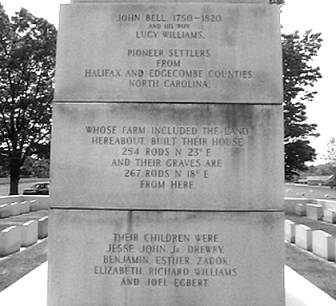
Several graves show pre-1950s death dates, in which case the bodies were exhumed from their original resting places and reinterred at Bellwood. One of the most prominent examples is the grave of former Oklahoma Chief Justice, Hon. John Bell Turner, who died in 1936. As a side note, his gravestone is the only one that is different from the others inside the wall; his original gravestone was most likely brought with him.
Bellwood Cemetery is located on Highway 41, just east of the Bell School building. It is open to the public during daylight hours. When visiting Bellwood, please don't lose sight of its purpose: the final resting place of real people, just like us, who lived and died. Please respect the cemetery and the families of those buried there.
Update: View a list of the people who are buried in the area enclosed by the wall.
The Red River
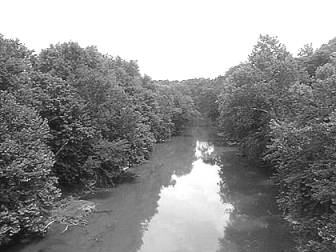
The Red River bottomland boasts large corn and tobacco fields as far as the eye can see. The aroma of freshly-cut tobacco being dried in tobacco barns fills the late summer air. Robertson County is known as the dark-fired tobacco capital of the world.
Meandering peacefully amid the fields and forests of northwestern Robertson County, the Red Riveris much the same now as it was in the days of John Bell -- playing the same magical melody it did when Betsy Bell, Joshua Gardner, and others frolicked and picnicked along its banks 200 years ago.
Port Royal State Park
Port Royal State Park, located off Highway 76 about 7 miles from Adams, is what remains of the area's first town. Up until the mid to late 1800s, Port Royal boasted the area's post office, steamboat port, doctor's office, and other businesses. Port Royal was also where the Red River Baptist Church was born, and where in 1815, elder Reuben Ross made a highly-scrutinized statement about Calvinism while preaching at a funeral. This was part of a debate happening in the Baptist faith at the time, which soon led to big changes. The infamous "Trail of Tears" also ran through Port Royal.
With the advent of the Edgefield and Kentucky Railroad, which ran through the Adams area rather than Port Royal, the city eventually became a ghost town.
Today, a museum is housed in Port Royal's last surviving commercial building, which was built in the 1850s. The sites where other early buildings stood, some dating back to the 1700s, are marked by small depressions and an occasional foundation stone.
More: Early History of Adams, Tennessee
